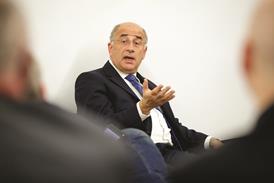Eyebrows were raised last month when the European Parliament voted in favour of the Voss Report, seemingly taking the EU a step closer to a regulatory framework and imposing a fee cap on litigation funding to rein in the ’astronomical and unjustified’ returns being driven by the ’enormous profits of hedge funds’. But before the anti-litigation funding lobby gets too excited and the funding industry too glum, things need to be kept in perspective.

For a start, this is far from a fait accompli. The publication is an ’own initiative report’ which is a formal request by the European Parliament to the European Commission to propose a particular legislative act or amendment. There is no obligation by the commission to put forward legislation and, by all measures, this is only the beginning of the legislative process.
Those behind the report have also commented that there has been little feedback and engagement from funders. One would expect the European Litigation Funders Association (ELFA) and the International Legal Finance Association (ILFA), as well as other market participants, to be fully engaged with the commission than they were with Axel Voss and his team.
But more importantly, own initiative reports are a preliminary review of the issues of the subject matter and are known for making far-reaching recommendations, knowing that a far more substantive and detailed research by the commission often leads to significant dilution. And given the paucity of the data Voss relied on at both the detail and macro level, one would hope so.
For example, the reference to funders’ returns being ’up to 300% or even 3000%’ is heavily misguided. Notwithstanding the lack of any quantitative explanation as to the relationship between pricing and risk (litigation risk is not exactly for the faint-hearted), the report relied on one litigation funding agreement mentioned in a 2017 CAT judgment in Merricks v Mastercard and one out-of-context data point from a 2014 submission by Bentham Europe (now Omni Bridgeway) to the Dutch Ministry of Security and Justice which claimed an average gross return of 298% on invested capital using data on cases between October 2001 and June 2013.
The authors instead could have considered relying on comprehensive, up to date, publicly available data from the largest litigation funder globally (Burford Capital), which would have painted a much better picture on the actual reality of litigation funding returns. One would have seen that between 2009 and June 2022, they had only won (defined as generating a positive return) 109 out of 173 fully concluded investments and out of those 109, only eight generated a return on invested capital (ROIC) of greater than 300% invested and only 22 generated a ROIC greater than 200% invested, with a weighted average ROIC of 69%. One would also have seen that some investments from 2010 are still on-going, so assuming they concluded after 13 years with a 300%, those would be a c. 11% IRR, which is less than the average 10-year IRR of most asset classes and a galaxy away from the 300% or 3000% returns that so glamorises the report’s argument.
Voss also sought validation by referencing developments in Australia, in particular its recognition of issues with litigation funding and the requirement for funders to hold an Australian Financial Services licence. However, it’s all rather moot when the report failed to mention that the Australian Full Federal Court gave a resounding thumbs down for that idea in their June 2022 judgment in LCM Funding Pty Ltd v Stanwell Corporation Limited, describing the AFS licence as ’placing a square peg into a round hole’ that burdened funders with ’a legislative and regulatory regime characterised by uncertainty, inconvenience and the potential for mischief by class action respondents’ and that the recently elected government and new attorney general Mark Dreyfus have already released draft regulations to unwind this requirement. Key omissions by any measure.
On a macro level, the report fails to define the claimant group it are seeking to protect. In practice, most users of litigation funding are either corporates or consumer organisations with whom there is ’no asymmetry of sophistication’ (as one funder articulately put it). Even Australia grasped this point by using the existing consumer-focused regulatory framework to cover the litigation funding of class actions. By not defining the beneficiaries of litigation funding, the report has not addressed the key question of how any such regulatory framework would work alongside existing regulation that already protects consumers in financing (including litigation finance) transactions.
But perhaps the single biggest failing of the Voss report is how it has missed the real crux of the issue. If the aim really is to protect consumers on one side of an ’asymmetry of sophistication’, then there is a far more obvious way to address this that they have not considered – make losing defendants pay the cost of funding.
Logically, if it is unfair that a wronged party should have to pay ’astronomical and unjustified’ rewards to litigation funders, then it is also unfair that a wronged party should have to pay the costs it unavoidably incurs in accessing justice at all. I’m sure that if Axel Voss was the victim of wrongdoing by the losing defendant who has caused him to incur these costs in the first place, even he would not be happy to discover that the wrongdoer isn’t paying for his costs. In other words, the real genesis of this problem is not third-party funding but the parties who commit wrong in the first place.
And what about the precedent of fee caps? If fee caps are to address the greed of hedge funds, then would the capping of defendant lawyer fees come next, given the fees of hugely expensive defendant law firms are one reason why litigation funding exists in the first place?
Despite the headlines, there is still a long way to go in this debate and the industry needs to engage proactively with the commission to encourage a more coherent, balanced understanding that addresses the key issues at hand. The Voss report may be both unsatisfyingly hollow and narrow but it is the beginning of a long process that should act as a catalyst for the industry to take a lead role in educating and framing the future of litigation.
Tets Ishikawa is managing director of LionFish, a litigation funder































No comments yet